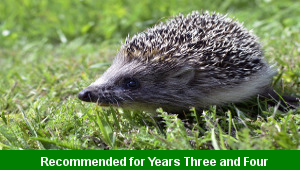Food Digestion

This English teaching pack for Key Stage Two gets the children to identify and model how to write an explanation to describe how and why food is digested in the human body for a range of different functions.
The class can use vocabulary words to link each of the paragraphs in their explanation of how food is digested to record the different stages in the body process.
Download this teaching pack including a lesson plan, classroom activities and an interactive presentation to identify and model how to write an explanation to describe how and why food is digested in the human body for a range of different functions
Activities in this teaching pack include a display poster to identity the name and location of the main organs in the digestive system, a worksheet to identify and record matching questions for different answers about the digestive system and a template for support ability levels to format and structure an explanation about how food is digested in the human body.
The interactive presentation gets the children to explore how to compose an explanation about how and why food is digested in the human body for different functions.
This lesson is part of an English scheme of work to get the children to practise using the correct text features when composing explanations about how and why different organs in the human body function. There are teaching activities for shared learning, differentiated worksheets to support independent learning and interactive presentations to introduce concepts and key skills.
-

Rounding Hundreds
Explain and model how to round some different numbers to the nearest hundred based on the place values of the digits in each number
-

Rounding Tens
Identify and record how to round some different numbers to the nearest ten based on the place values of the digits in each number
-

Classic Animal Stories
Investigate the structure and content of classic works of fiction by significant authors with animals as the main characters
-

Cities, Towns and Villages
Research and present the history of a range of different buildings and people that are part of the local community using a school exhibition
